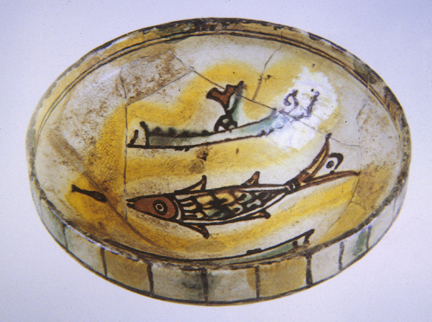Early Islamic pottery was for the most part simply produced, utilitarian ware produced for the domestic market, and as such, little of this work remains. New styles of working would be introduced into the Middle East beginning in 751CE. The ruling Abbasid empire had conquered most of the region, and launched a successful military campaign against China. More than 20,000 prisoners were taken captive and brought under Abassic control. Among these prisoners was Tu Huan, who would later write of his period of captivity. He tells of how among these captives were many artisans who brought into Persia the arts of textile design, lacquerware, gold and metal work, and ceramics.
Sari was a pottery center located along the southern coast of the Caspian Sea, along the silk route to Samarquand and beyond to China. Potters in villages along this transit road were exposed to ceramics of the East, and learned to mimic the styles they saw. Sari, in particular, was influenced by Tang Dynasty sancai ware being shipped into Persia. The local potters began using the three color style, using yellow, green, and amber glazes to create lively painted pottery. Here a fisherman in his boat will undoubtedly return home with a fish tale.

Bowl with vertical rim, Sari, 8.5" w., 10th Century


